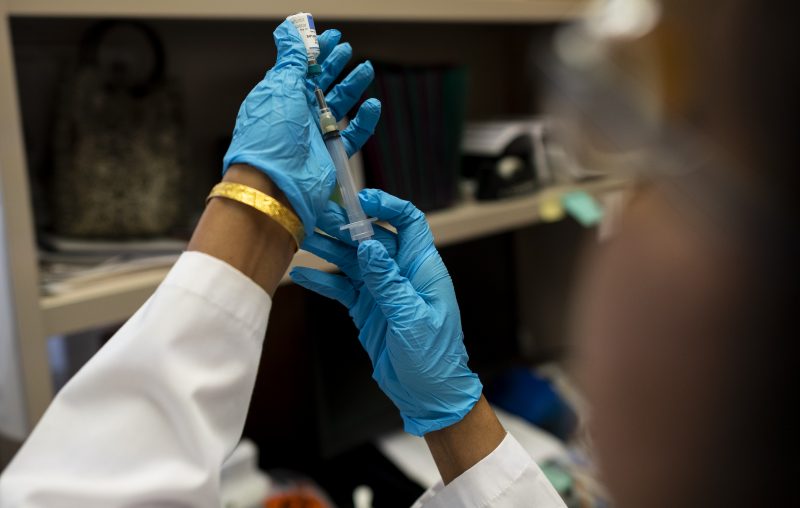US quarantines 5,200 migrants over mumps and chicken pox exposure
US mumps cases fell dramatically after the two-MMR dose program was introduced in 1989, according to the Centers for Disease Control and Prevention (CDC), with only a few hundred cases reported each year — before a resurgence in 2006 (Johannes EISELE)
Washington (AFP) – US authorities said Friday they had placed 5,200 detained migrants into quarantine, mainly over exposure to mumps, linking a surge in cases to a recent outbreak of the contagious disease in Central America.
An Immigration and Customs Enforcement (ICE) official told AFP that as of June 13 almost 4,300 detainees were being confined across 39 facilities for exposure to mumps, more than 800 for exposure to chicken pox, and about a hundred for both.
The first confirmed case of mumps among ICE detainees was reported on September 7, 2018 and since then the figure has grown to 334, the official added.
Nathalie Asher, ICE’s executive associate director of enforcement and removal operations, said that 75 percent of the current detention population came directly from the border, while the others were detained within the US.
Given this, and recent outbreaks of mumps in Central America, “the preponderance of evidence points to the major influx at our Southwest border being, at minimum, a significant contributing factor of these occurrences,” she said.
“The impact is significant in the short and long term,” she said, including longer detentions and delayed removals.
The number in quarantine represent about a tenth of the approximately 52,000 ICE detainees overall.
The agency was giving exposed asymptomatic detainees measles, mumps, and rubella (MMR) vaccines and quarantining them for 25 days from the last incubation period, it said.
Mumps is a contagious disease with symptoms such as puffy cheeks and a tender, swollen jaw as well as fever, muscle aches and loss of appetite.
Most people make a full recovery within two weeks but in rare cases there can be severe complications.
The US has been experiencing its own sporadic mumps outbreaks in the past several years, which scientists believe might be linked to the vaccine’s waning immunity over time and the need for a booster shot at the age of 18.
Cases fell dramatically after the two-MMR dose program was introduced in 1989, according to the Centers for Disease Control and Prevention (CDC), with only a few hundred reported annually for several years thereafter.
But they have been on the rise again since 2006, with more than 6,000 cases in 2006, 2016 and 2017.
There have been 1,002 cases reported this year from January 1 to May 24.
Disclaimer: Validity of the above story is for 7 Days from original date of publishing. Source: AFP.


